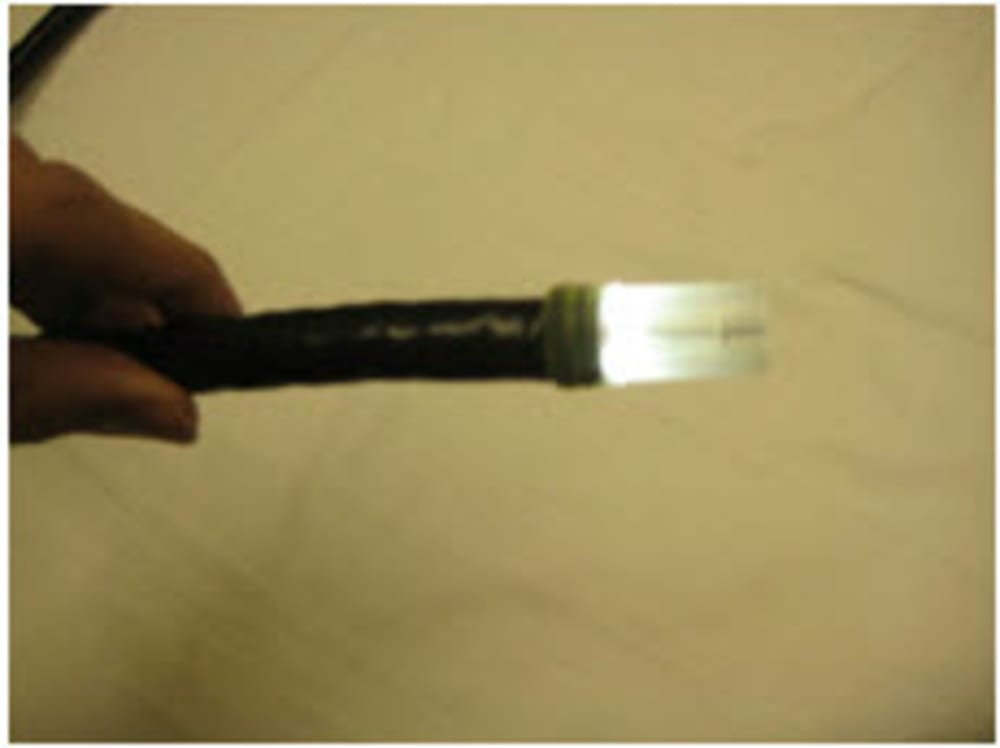When upper gastrointestinal (GI) bleeding occurs, an endoscope is passed through the patient’s esophagus and into the GI tract for a visual assessment of the bleeding location. A major problem in endoscopic management of upper GI bleeding is difficulty identifying the bleeding source because it is often obscured by overlying blood and clots. Traditional efforts of removing blood clots are via lavage (i.e. using large bore gastric tubes or suction through large channel therapeutic endoscopes). These methods often fail to dislodge blood clots that are adherent to the base of the bleeding site. Another method is to remove clots mechanically with a snare. Physicians are generally reluctant to use this latter technique because of the risk of induced bleeding. A clot dissociating composition comprising of hydrogen peroxide and a surfactant can also be used; however, this process is time-consuming and the delay in treatment can lead to serious consequences. These problems have fueled the search for quicker and cost effective ways to attain dissociation of blood clots.
The Endocutter is an endoscope accessory that is designed to be compatible with any single or dual channel endoscope. The device is used in conjunction with the endoscope’s existing suction power, chopping up blood clots and other stomach content before they enter the narrow instrument channel. It consists of a motor with a spinning blade shaft encased in a clear polycarbonate shell that can be attached at the distal end of the endoscope and powered via wiring through the instrument channel. The blade is recessed and surrounded by the shell in order to protect the stomach lining from contact with the blade. The motor is sufficiently small to be placed on the end of the endoscope, while preserving vision through the objective lens and use of the instrument channel. The Endocutter allows the physician to quickly locate the bleeding site without the need for repeated endoscope reinsertions or extended patient stay.
The prototype comprises of several components integrated in the complete design. These components are the protective casing, rubber attachment, motor, blade connector, and blade. The wiring for the prototype can be passed through the instrument channel of the endoscope from the distal end with the help of a guide wire. The end terminals of the wires will be connected to a switch that is integrated with batteries. Rapid prototyping is employed to manufacture the casing, rubber attachment, blade and connector.
Acute GI bleeding accounts for 350,000 to 500,000 hospital admissions in the US each year. The average length of stay varies, but is generally between four and seven days. The average hospital cost for GI bleeding exceeds $5000; most of this cost is incurred from overnight hospital or ICU stays. Thus, a reduction in the length of stay has great potential to reduce costs related to GI bleeding.
Clinical trials are being conducted on pigs at the UofM hospitals under the supervision of GI specialist. The testing conducted so far ratifies the concept and proves the efficiency of the device.
Like this entry?
-
About the Entrant
- Name:Raghunath Sai Katragadda
- Type of entry:teamTeam members:Raghunath Sai Katragadda
Taarif Jafferi
Zachary Weingarden
Rahul Rattan - Hardware used for this entry:Rapid Prototype Machine, 3D printer, CNC Lathe and Milling machineSoftware used for this entry:CATIA, ANSYS, Solidworks
- Patent status:pending








